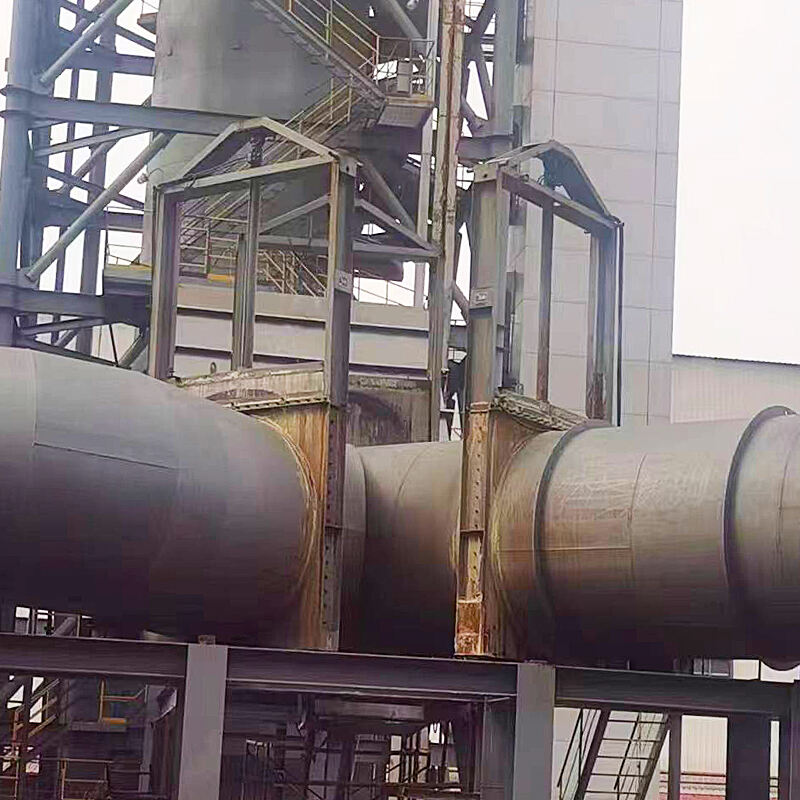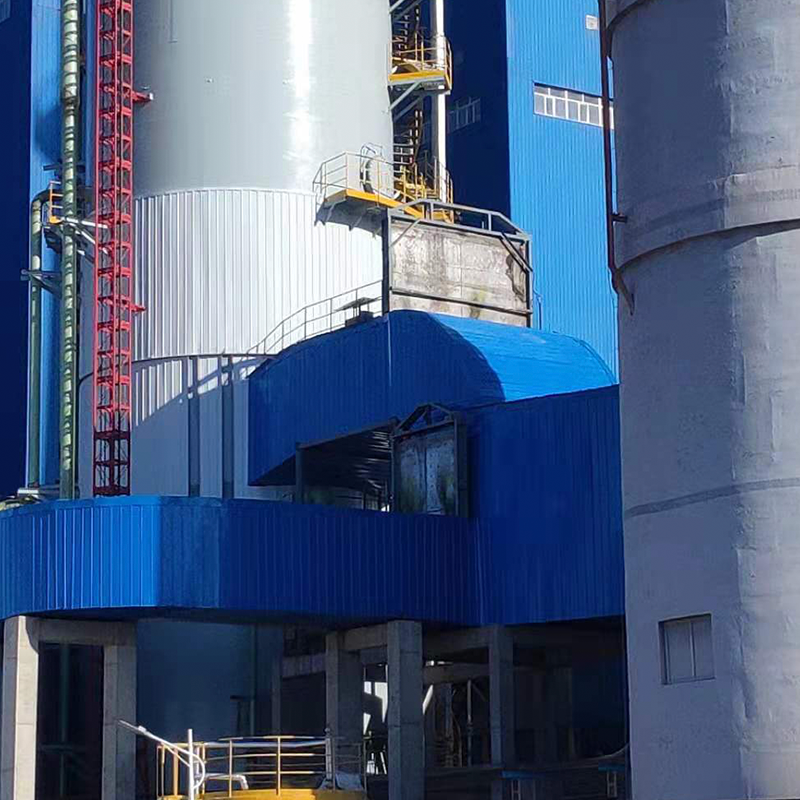The Role of Flue Gas Dampers in Waste-to-Energy Systems
How Flue Gas Dampers Regulate Airflow and Pressure
Flue gas dampers are vital components in waste-to-energy (WtE) systems, where they function as modulators to adjust airflow. Their primary role is to maintain optimal pressure levels, ensuring efficiency and safety in the plant operations.
- Efficiency and Safety: By regulating the gas flow, dampers contribute to consistent combustion temperatures essential for enhanced performance.
- Responsive Adjustments: Their design facilitates quick modifications in response to fluctuating energy loads, a common occurrence in WtE facilities.
The integration of flue gas dampers is thus critical to sustaining stable operational conditions and maximizing the efficacy of the waste-to-energy process.
Enhancing Combustion Efficiency Through Precise Control
Reliable and accurate airflow control is crucial for combustion efficiency in waste-to-energy systems. Flue gas dampers play a pivotal role in optimizing the supply of oxygen, which reduces the risk of incomplete combustion—a major contributor to CO2 and particulate emissions.
- Improvement in Energy Recovery: Systems with optimized damper functionalities have been shown to improve energy recovery rates by up to 25%, underscoring the importance of precise control.
- Environmental Compliance: Regular maintenance of these dampers ensures that they operate effectively, thereby supporting energy performance and compliance with environmental regulations.
Through meticulous control and ongoing upkeep, flue gas dampers help achieve both operational efficiency and environmental sustainability.
Preventing Backflow and Ensuring Operational Safety
Flue gas dampers serve a critical function in preventing the backflow of flue gases, which can result in hazardous conditions, such as plant shutdowns or safety incidents.
- Safety Enhancements: The integration of fail-safe mechanisms, including emergency closure features, significantly enhances operational safety.
- Reduction in Safety Incidents: Statistical data show that facilities equipped with robust damper systems experience up to 30% fewer safety incidents related to gas backflow.
These mechanisms and systematic designs make flue gas dampers indispensable for maintaining safety standards and ensuring continuous and safe operation in waste-to-energy plants.
Material Selection for High-Temperature Durability
Stainless Steel vs. Alloy Composites: Balancing Cost and Performance
Selecting the right material for flue gas dampers is crucial in balancing cost and performance. Stainless steel is well-regarded for its excellent durability and corrosion resistance, making it a popular choice despite its higher upfront cost. On the other hand, alloy composites may offer enhanced thermal performance and lighter weight at a lower cost, making them an attractive alternative. Choosing between these materials significantly impacts the lifespan of the dampers; those made from corrosion-resistant materials generally provide a longer service life and reduce overall maintenance costs. While stainless steel may have a higher initial investment, its longevity often offsets these costs by minimizing replacements and repairs.
Corrosion Resistance in Harsh Flue Gas Environments
The corrosive nature of flue gases necessitates the use of materials capable of withstanding high temperatures and aggressive conditions. Materials used in flue gas dampers must be resistant to sulfuric acid and other harmful substances often found in exhaust gases to maintain operational integrity. Research suggests that utilizing specialized coatings or alloys can decrease corrosion rates by up to 50%, effectively extending the dampers' functional life. This extended lifespan not only ensures consistent performance but also provides significant cost benefits over time by reducing the frequency of replacements and repairs.
Thermal Expansion Management in Damper Design
Managing thermal expansion is integral to the design of flue gas dampers. This involves using materials that can handle significant temperature fluctuations without compromising structural integrity. Incorporating design features such as expansion joints or flexible seals helps mitigate risks associated with thermal stress, thus enhancing the durability of the dampers. Engineers have found that proper design strategies can lower the failure rates related to thermal expansion by as much as 40%, resulting in more reliable and long-lasting damper operations. By addressing these thermal challenges, industries can maintain efficiency and safety in their high-temperature applications.
Emission Reduction Through Flue Gas Damper Optimization
Controlling Gas Flow to Minimize Particulate Release
Optimizing gas flow control through flue gas dampers is crucial for minimizing particulate emissions during combustion processes. By effectively managing the airflow, we can significantly cut down on the particulates released into the environment, which is essential for meeting regulatory standards. This optimization not only helps achieve compliance but also enhances the environmental performance of waste-to-energy plants. According to various studies, plants that have implemented optimized dampers have reported reductions of up to 80% in particulate emissions, illustrating the effectiveness of this approach.
Synergy with Scrubbers and Electrostatic Precipitators
Flue gas dampers, when effectively integrated with scrubbers and electrostatic precipitators, offer a comprehensive solution for emission management by efficiently capturing contaminants from exhaust gases. This synergy ensures that the flow of gases aligns with the optimal removal conditions needed by scrubbers and precipitators, enhancing their pollutant-capturing efficiency. Facilities that have adopted this integrated approach have documented substantial reductions in overall emissions, with some case studies showing decreases of over 60%. This demonstrates the crucial role of dampers in supporting emission control systems.
Case Study: Emission Reductions in European WtE Plants
An examination of European waste-to-energy (WtE) plants showcases the remarkable impact of flue gas damper optimization on emission reductions. For instance, a key facility in Germany witnessed a 70% decrease in NOx emissions after upgrading its damper technologies and retrofitting existing equipment. These advancements were instrumental in meeting stringent EU environmental standards, providing substantial compliance benefits. The success of this integrated approach underscores the potential of damper optimization in significantly enhancing the environmental efficacy of WtE operations.
Operational Maintenance and Performance Enhancement
Routine Inspection Protocols for Damper Systems
Routine inspections are crucial for ensuring the optimal functioning of flue gas dampers, helping to proactively identify issues before they escalate into serious problems. For effective maintenance, inspections should focus on the mechanical components of the damper systems, such as seals and actuators, as these are typically the most susceptible to wear and tear. Documented practices from operators illustrate that adhering to a regular inspection schedule can lead to a 20% reduction in unexpected downtime, which is essential for maintaining operational efficiency and minimizing disruptions.
Detecting and Addressing Seal Degradation
Seal integrity is a linchpin for the operational efficiency of flue gas dampers, as degraded seals can result in considerable energy losses and increased emissions. Detecting seal issues early is pivotal, and using techniques like thermal imaging and pressure testing can be invaluable for spotting wear before it progresses to system failure. Studies have demonstrated that proactive maintenance of seals can enhance overall system efficiency by as much as 15%, ensuring the damper systems contribute to energy conservation and environmental compliance.
Calibration Strategies for Actuators and Sensors
Proper calibration of actuators and sensors is essential to ensure accurate operation of flue gas dampers, which in turn maintains desired airflow and pressure levels. Implementing regular calibration schedules not only prolongs the lifespan of components but also enhances the overall efficiency of the system. Data supports that facilities with robust calibration routines achieve operational efficiency improvements of approximately 10-15%, underscoring the importance of these strategies in maximizing the performance of damper systems and reducing operational costs.

Compliance and Safety Standards for Flue Gas Dampers
Meeting EU Emission Directives (IED 2010/75/EU)
Adhering to the EU Emission Directives, particularly the IED 2010/75/EU, is paramount for waste-to-energy plants to manage their gaseous emissions effectively. Flue gas dampers are instrumental in optimizing combustion and minimizing the release of pollutants, aligning operations with these stringent guidelines. Effective use of dampers helps facilities reduce the risk of non-compliance penalties, as corroborated by research demonstrating a strong correlation between compliance and reduced environmental impact. By integrating dampers effectively, plants not only minimize emissions but also enhance operational sustainability.
Pressure Testing and Leakage Rate Certifications
Regular pressure testing is crucial for ensuring the integrity of flue gas dampers under stress, thus preventing potential leaks that could pose safety risks. Leakage rate certifications further confirm that systems meet required operational standards, driving compliance and safety. According to regulatory documentation, adhering to these certifications can cut leaks by up to 90%, significantly bolstering plant safety and efficiency. Maintaining rigorous testing schedules is essential for both regulatory compliance and the safeguarding of operational environments.
Fail-Safe Mechanisms for Emergency Shutdown Scenarios
Incorporating fail-safe mechanisms within flue gas dampers is vital for maintaining safety during emergency shutdown scenarios. These systems, often automated and sensor-triggered, serve to rapidly contain hazardous conditions and minimize risks. Historical safety data underscores the efficacy of such mechanisms, indicating that plants equipped with these features report fewer incidents during emergencies. Ensuring that these fail-safe systems are operationally robust enhances both the handling of emergency situations and the overall safety profile of waste-to-energy facilities.
FAQ Section
What is the primary role of flue gas dampers in waste-to-energy systems?
Flue gas dampers primarily regulate airflow and maintain optimal pressure levels in waste-to-energy systems, ensuring efficiency and safety in plant operations.
How do flue gas dampers enhance combustion efficiency?
They optimize the supply of oxygen to prevent incomplete combustion, which reduces the risk of CO2 and particulate emissions, thus improving combustion efficiency.
Why is material selection important for flue gas dampers?
Choosing the right materials, such as stainless steel or alloy composites, balances cost, performance, and durability, impacting the lifespan and maintenance costs of the dampers.
How can flue gas dampers help in emission reduction?
By optimizing gas flow control and integrating with scrubbers and electrostatic precipitators, dampers minimize particulate emissions and enhance environmental compliance.
What maintenance practices enhance the performance of flue gas dampers?
Routine inspections, addressing seal degradation, and calibrating actuators and sensors are key maintenance practices to ensure damper efficiency and longevity.
Table of Contents
- The Role of Flue Gas Dampers in Waste-to-Energy Systems
- Material Selection for High-Temperature Durability
- Emission Reduction Through Flue Gas Damper Optimization
- Operational Maintenance and Performance Enhancement
- Compliance and Safety Standards for Flue Gas Dampers
-
FAQ Section
- What is the primary role of flue gas dampers in waste-to-energy systems?
- How do flue gas dampers enhance combustion efficiency?
- Why is material selection important for flue gas dampers?
- How can flue gas dampers help in emission reduction?
- What maintenance practices enhance the performance of flue gas dampers?


